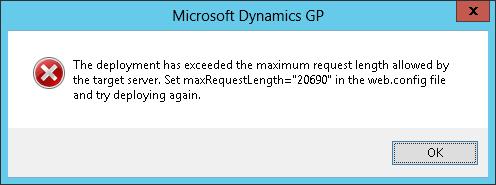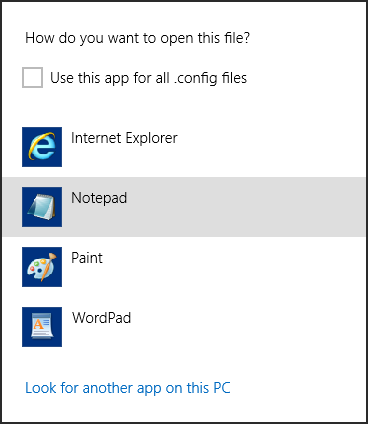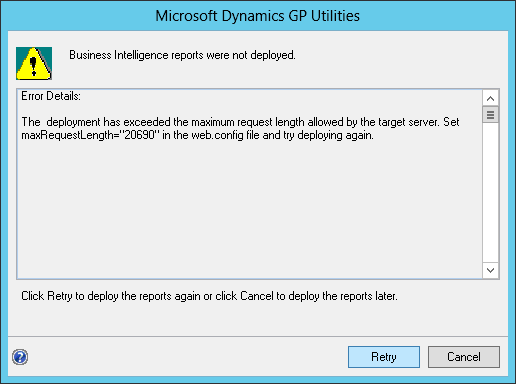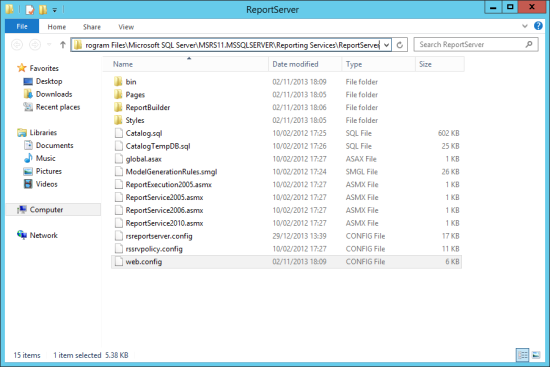 When Reporting Tools Setup is used t deploy the reports to SQL Server Reporing Services an error be produced if the default configuration of SSRS has not been amended (I thought I’d blogged about this error before, but when trying to find it to send the post to someone I couldn’t find it).
When Reporting Tools Setup is used t deploy the reports to SQL Server Reporing Services an error be produced if the default configuration of SSRS has not been amended (I thought I’d blogged about this error before, but when trying to find it to send the post to someone I couldn’t find it).
The error produced is the following:
 Microsoft Dynamics GP – The deployment has exceeded the maximum request length allowed by the target server. Set maxRequestLength=”20690″ in the web.config file and try deploying again.
Microsoft Dynamics GP – The deployment has exceeded the maximum request length allowed by the target server. Set maxRequestLength=”20690″ in the web.config file and try deploying again.The change needed to allow the Microsoft Dynamics GP reports to be deployed is a very simple one to make.
Open the install folder of SQL Server Reporting Services (which for SQL Server 2012 is %programfiles%\Microsoft SQL Server\MSRS11.MSSQLSERVER\ReportingServices\ReportServer and edit the web.config file:
The simplest way of editing the file is to use Notepad:

Scroll down the web.config file and find the following line:
<httpRuntime executionTimeout="9000" />
Replace it with the following:
<httpRuntime executionTimeout="9000" maxRequestLength="20690" />
Save the file and restart the deploy and the reports should now redeploy.
If you have made the change at the error message, you may see the following error report; hit Retry and it should continue (you may need to wait a short time for SQL Server Reporting Services to cycle, before the deploy will successfully resume:

Show/Hide Error Message
Microsoft Dynamics GP Utilities
Business Intelligence reports were not deployed
Error Details
The deployment has exceeded the maximum request length allowed by the target server. Set maxRequestLength="20690" in the web.config file and try deploying again.
What should we write about next?
If there is a topic which fits the typical ones of this site, which you would like to see me write about, please use the form, below, to submit your idea.







You Path to the config file is wrong.
It leads to a config file, but not the right one.
this is right : Copied from community.dynamics.com:
If you go to …Program Files\Microsoft SQL Server\(SRS Instance)\Reporting Services\ReportServer\web.config and open it with notepad, you should see something similar to the following:
Change it to ().
Hi Lee,
I missed the MSRS from before the 11 in the path which I have now added in.
I should probably have been explicit in saying that the MSSQLSERVER reference is the name of the SQL Instance which will change depending on whether you’re using a Named Instance or not (I’m not).
Ian